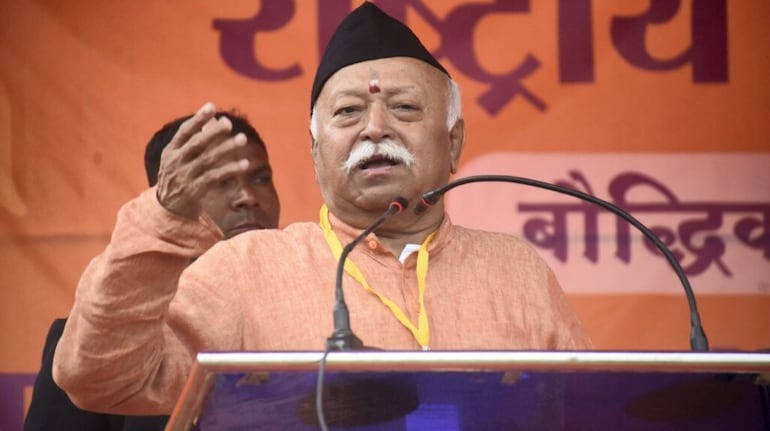
Recently, from March 21 to 23, Rashtriya Swayamsevak Sangh (RSS) held its annual meeting of Akhil Bharatiya Pratinidhi Sabha (ABPS) in decision making body in Bengaluru. During this meeting, in one of the press briefings, the SSR Sarkaryavah (General Secretary) Dattatreya Hosabale spoke about 'One Nation, One Culture', which he claims has been the stance of SSRs since its formation. This was the position of the organization from the moment it was started. Every single nation is defined by one culture. This culture derives from Vedic traditions and mores. Fusing all Indian cultures into one is critical for development and growth of India as a nation. RSS has been criticized by their opposition for this arbitrary culture and political concept that attempts to capture nation without assimilating into it.
Conceptualisation by Upadhyaya
In 1965, during the April lectures, Deendayal Upadhyaya, an RSS ideologue who believed in ‘Integral Humanism' defined Hindu nationalism, followed by a multi-volume publication that reasoned the ethnocentric Indian identity through Hinduism. He has shaped the contemporary framework of Hindu nationalism to a greater extent. His students first published the parts on Hindu nationalism in 1988 in “Deendayal Upadhyay: Ideology and Perception” documenting different aspects of patriotism.
Aspects of this issue are taken up by CP Bhishikar In the fifth volume of this series. Further explaining Upadhyaya’s frame of reference, Bhishikar elucidated: “A whole integrated society has been living as a single nation in Hindusthan, our ancient land, for thousands of years. History after history strengthens this nationalistic sentiments. As early as the Vedas, the term Rashtra is already extensively utilized. In the Shri Sukta or Shri Lakshmi Strota, which is chanted by millions of Hindus, there is an invocation to Goddess Lakshmi that goes ‘Pradurbhuto Surashtreasmin Keertinridhim Dadatu’ ‘May glory and prosperity come unto me as I was born in this Excellent Rashtra’.”
There is a mix of pride and devotion to the Motherland. Concepts like national life, broad principles, and the social incentives and disincentives, the obligations and the taboos, the social phenomena of rise and fall, and the society and the individuals' joy and suffering over the course of thousands of years should invite some profound thought. Did we receive that sense of patriotism from the British? Or had our forefathers delved into the encouraging force of patriotism? And if so, which one? Does it fit the present?”
He has thought about them and given a solution to these questions. Following Upadhyaya’s accounts, as dissected by Bhishikar, he will have to accept that all over the country, India “there is a metanarrative of all the thoughts which have been in this area.” It has become completely synonymous with Hindu spiritual thought.
Hindu philosophers have utilized the metaphor of the human body on numerous occasions. The human body is something that everyone can see, and yet nobody assumes that the body is the complete man. What functions indeed render the coordination of thinking and action possible? To this question, Hindu philosophers have answered that there is an impalpable, fixed, and unchanging force that spiritualizes and changes, that is behind all these activities. It is impossible for a living body to exist without a soul, and this soul-force sustains the life-force without, the body is lifeless and destroyed. This is true about a country too.
An intrinsic national spirit
In ancient Indian scriptures, there existed a distinct branch of knowledge on the science of patriotism, termed as ‘Daishik Shastra’ or the study of the nation, which dealt with the safeguarding of the nation. Bhishikar states that this isa word which is now obsolete and was literally called the Science which Protects the Nation. In the sense of Hindu nationalism, patriotism is often another way of expressing ‘Daishik Shastra.’ It seems that the Indian people realized and contemplated about this driving force of the nation in the most rational way possible.31
In his essay on the nation, Upadhyaya speaks of the nationalist spirit from within which, is at the heart of Hindu nationalism. ``To us Daishik Shastra (Science of Patriotism),`` says Bhishikar, ``there is something that fundamentally provides nationhood to our people speaking the same language and having the same way of living, common victories and defeats, shared friendships and enmities, and so many other things in common. This mysterious and vital but invisible aspect has been called Chiti by our scholars in this science. It appears as if Pandit Deendayal Upadhyaya had in his concepts on nationhood, made use of this scientific term, glancing at him, adds Bhishikar.
Simply put, Chiti represents the essence of a nation’s character. The authors of Daishik Shatra believe that nations cannot be produced synthetically, although states can. After World War II, a number of such “states” seem to have been created. Large and small institutions can certainly be created artificially. While systems can be built, a nation possesses Chiti at the moment of its birth.
The existence of Chiti and its radical spirit is as central to a nation as it is to itself. When the inner Chiti becomes feeble, the nation lacks strength, and following the obliteration of Chiti, there is complete absence of the nation from the map. The nation’s flowering is the flowering of Chiti. Chiti is that nation's very reason for existence. The nation’s ultimate woe comes paradoxically, yet rather unsurprisingly when its universal existence diverges from its purpose for living.
Read More: Punjab CM Bhagwant Mann Criticizes Rahul Gandhi and Navjot Sidhu's Leadership Aspirations

 Share
Share



